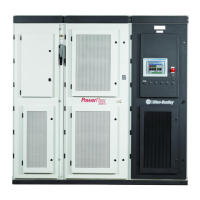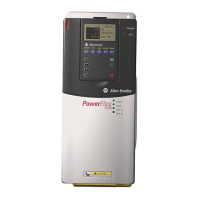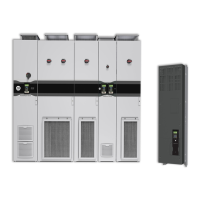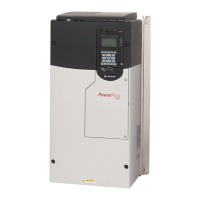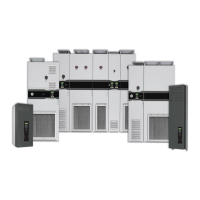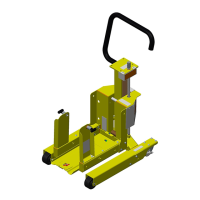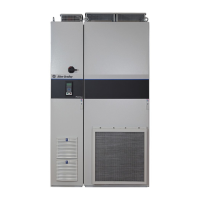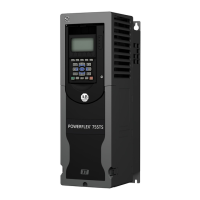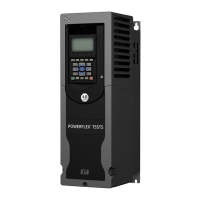Functional Description 1-27
7000-TD002A-EN-P – September 2007
2. The motor was already rotating but the flying start failed because
the drive passed through the low slip region too quickly to allow
the motor flux to build up. The solution to this problem is to
increase the value of parameter Accel Time 1. Most medium
voltage motors have a rotor time constant in the range of 1 to 5
seconds, and it can take a few seconds for the flux to rise to a
detectable level. Until flux is detected, the drive does not use the
normal speed ramp but continues to accelerate at the rate defined
by parameters Accel Time 1 and Ramp speed 1. If this rate exceeds
2Hz/sec, then the drive limits it internally to a maximum of 2Hz/sec.
3. The motor is rotating in the direction opposite to the commanded
direction of rotation. The slip frequency will increase instead of
decreasing as the drive accelerates and no flux will be induced in
the motor. In such cases, selecting Bidirectional flying start
feature, allows the drive to search the motor in opposite direction
before stalling. This option can be selected by enabling
BiDr
FlyStrt
in Special Features (99).
If the motor is coasting at a high enough speed (above about 40 Hz)
and the output contactor is closed, then the motor may self excite
with the drive motor filter capacitors and generate a high stator
voltage that the drive can detect. The drive will re-synchronize to
this voltage and quickly restart.
If the optional tachometer feedback is installed, then the drive knows
the speed of the motor at all times and can perform a flying start for
any speed or direction of rotation.
Flying Start (Synch Motor) With a synchronous motor, flying start is much quicker and more
reliable because a detectable stator voltage is produced whenever the
field is applied and the motor is rotating, even with zero stator current.
When the drive is started, rated field current is applied to the motor
but the stator current remains at zero until the end of the ramp start
delay to allow the rotor flux to build up. If the stator frequency is
greater than about 2 Hz, sufficient stator voltage is generated to
allow the drive to detect the speed and direction of the motor and
synchronize itself to the motor flux. If the flux feedback does not
reach a minimum level of 0.2pu, the drive assumes that the motor is
stationary and starts from zero frequency.
If an optional position encoder is installed, a flying start can be
performed for any speed or direction of rotation.
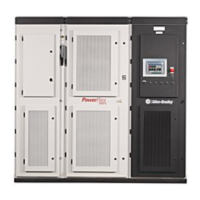
